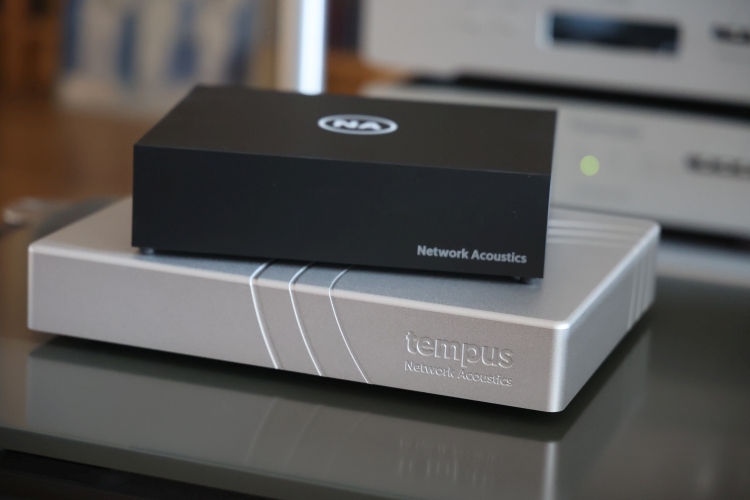
Review sample supplied by Network Acoustics
Retail Prices (ex VAT):
tempus world price 3,329 UKP (approx. 3.900 euro)
muon Pro Ethernet Filter 1.329 UKP (approx. 1.500 euro)
muon Pro Streaming Cable from 995 UKP for 1.5m (approx. 1.167 euro)
Network Acoustics
Network Acoustics was started by two music-loving audio engineers on a mission to design products that make streamed music sound as good as it possibly can. With a primary focus on digital, the streaming specialist makes digital cables such as USB, Ethernet, and “regular” digital cables. But what makes their portfolio stand out are products such as the eno Ethernet Filter and the muon Pro Ethernet Filter that I reviewed in April last year, and, of course, the tempus Network Switch, which is the subject of this review.
tempus
The most recent addition to the Network Acoustics portfolio is the tempus flagship Ethernet Switch, an ultra-low noise design, intended to deliver a clean and perfectly timed data signal to music and video streamers, media servers, NAS, and Smart TV.
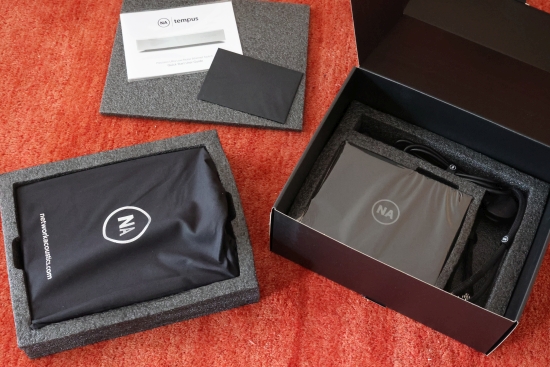
“Perfectly timed?” Some will shake their heads at the mere notion. Why on earth would that matter for an asynchronous digital signal that is error-corrected and holds no timing information? As I mentioned in another review, I won’t claim to know all the reasons why a network switch influences the sound, but one important aspect is that it is not the format or signal itself but rather the environment in which it is distributed that makes the difference. But rather than theorizing about the precise mechanisms, I always insert a review component into the system and listen to the result. In the end, all I can say is that I have repeatedly found clearly audible differences among switches, even among high-end models. And as my listening tests would soon confirm, the tempus is something very special!
In developing tempus, Network Acoustics consistently found that effectively separating the power supply from the signal clocking and output is a critical factor when designing an Ethernet Switch for high-end music and video streaming. They achieved this goal by designing a Switch with huge processing and switching capacity running at low-stress, ‘tick-over’ speeds, enabling noise-free and accurate data flow, even in bandwidth-intensive scenarios. In addition, the tempus incorporates precision clocking capable of simultaneously delivering perfectly accurate signals to all the devices in your entertainment home network, and contains integrated power filtering.
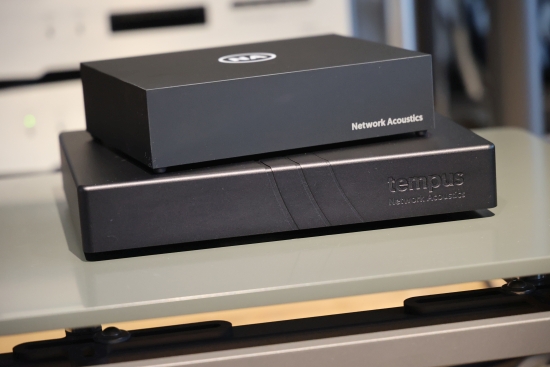
The tempus is also available in black
The tempus is fitted with a fully shielded enclosure engineered from a single aluminum billet to act as a final layer of noise rejection. In addition to being technologically useful, this also makes for a beautiful, seamless look and feel.
The Switch is perfectly matched with its Hybrid Power Supply Unit, a special design using a switch-mode supply combined with multilayered DC noise-filtering integrated into the power supply and the tempus network switch. Among audiophiles, switch-mode power supplies may have garnered a bad reputation, but when implemented correctly, these power supplies can outperform the linear variants. Network Acoustics opted for this solution to provide the clean and dynamic power switches and streamers need, while the special filtering avoids the potential downsides of such supplies.
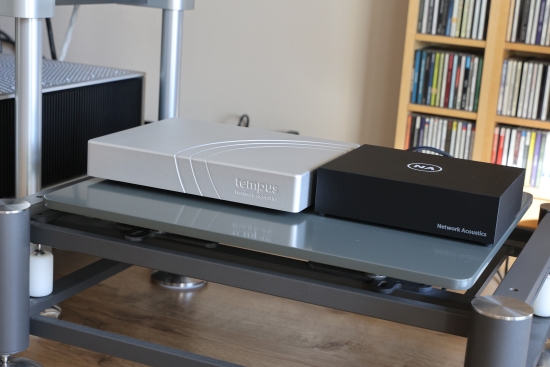
The power supply may have a very different shape than the switch, but it oozes quality and certainly does not look out of place on its supporting shelf. It’s that it is much lighter than anticipated; otherwise, I would not have guessed the material type so easily. It is made from plastic, but the finish is 100% seamless and so utterly smooth that it might as well have been industrial stone or ceramic. Until you pick it up, of course. But that, too, is a good thing. Why should audio components be heavy if that does not serve a purpose?
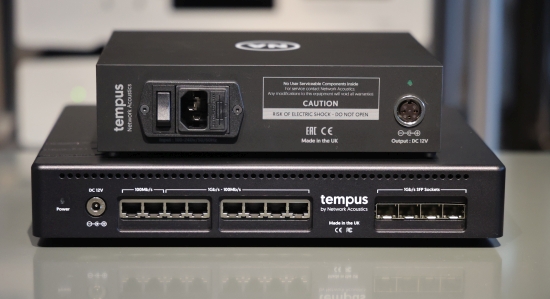
Connections
The tempus has a regular 12v DC barrel connector and could theoretically be used with other power supplies, should you wish to experiment with this. I have no special power supplies available so I did not try this, but it goes without saying that the partnering Network Acoustics power supply is specifically tailored to this task. This power supply is anything but an afterthought!
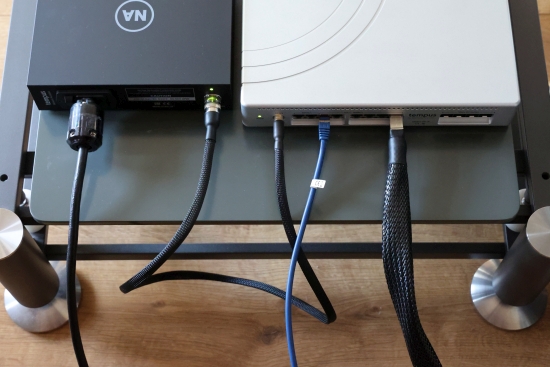
The tempus offers no less than 12 ultra-low noise RJ45 outputs. Six of these are universal Gigabit ports, and two are 100 Mb/s RJ45 ports. The manual states that Network Acoustics recommend connecting all devices to the 1Gb ports unless a product is specifically designed to operate at 100Mb. I used the 1Gb ports for my tests.
To the far right are four SFP interface slots intended for use with future Network Acoustics products. These slots can be used with various adapter modules, such as RJ45, Fiber, or a DAC (Direct Attach Copper) cable. With many possible uses for these slots, it will be interesting to see what partnering products Network Acoustics may have up their sleeves.
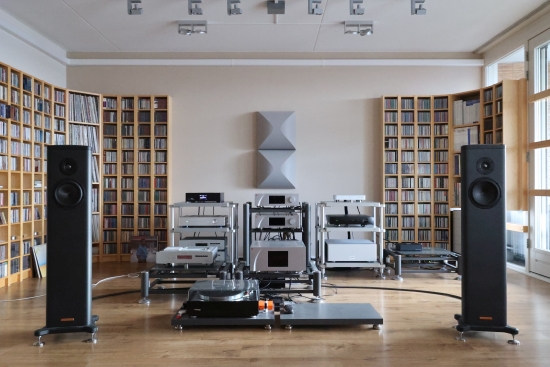
Review Context
The tempus switch will be listened to in the main system using Roon on various Music Servers, including the Antipodes Oladra G4 and Grimm MU1. The rest of the system comprises the CH Precision C1.2 DAC, CH Precision L1 preamplifier, CH Precision A1.5 power amp, and Magico S1 MkII speakers.
All digital sources are supported by HRS EXR Racks while the CH pre-amplifier and DAC are supported by an Artesania Exoteryc rack with Carbon Fiber Linear Arms. The CH power amplifier is supported by an Artesania Aire rack with Carbon Fiber Linear Arms and KSH2 Krion shelves.
The tempus will be reviewed on both racks, with and without Ansuz Darkz Resonance Control footers.
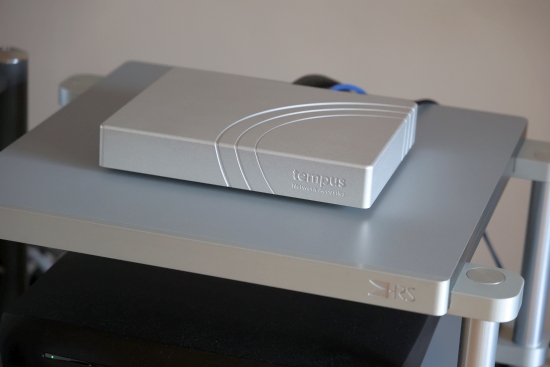
Listening
After connecting it in place of my budget Cisco switch, the tempus made a superb first impression, even though I still used standard Cat.6 cables. Whereas some products (switches, too) can take a little time to get accustomed to, the tempus immediately pulled me off the fence and right into the musical performance. Compared to the standard switch, the tempus provides an open, airy, and agile sound. It is super-delicate, contemplative, effortlessly lyrical, and immediately emotionally involving.
To my delight, the tempus is exceedingly neutral yet with a very natural touch. It’s the antithesis of technical or stereotypical digital. It greatly enhances the liquidity and adds a gently refined touch but without affecting the transparency, pacing, or resolution. Each music listener pays special attention to certain musical aspects. For me, Especially the pacing, articulation, and transparency of a recording are aspects I hold very dear. Some switches, interfaces, or cables may affect these aspects negatively. But not the tempus. This switch has a delicate and relaxed nature but does not sound slow at all. I’d say it is fast without being hurried.
Compared to the budget Cisco, the tempus allows the soundstage to develop further into the background, reducing the forward and relatively hard nature while increasing the focus and precise imaging of center-stage elements such as vocals. With the standard switch, vocals appear midway between the speakers but spread out more, larger than life. The tempus binds it more together and allows the portrayal of a more 3D image, as you would hear in real life.
The standard switch has a certain raw directness that can work in its favor if a system needs it, but this is probably not how it should be. Nevertheless, it should be noted that a high-quality switch will usually sound friendlier and more polished in comparison. And indeed, the Tempus is just a tad less hard-hitting and less forward for it, but also less abrasive and, importantly, infinitely more delicate.
Before the tempus, I reviewed the Ansuz X-TC3 and D3 switches. I don’t intend to enter a shootout kind of comparison and they are too different to pronounce any one as “better” or “best”. But precisely because they are so different, I think it will help paint the tempus’ sonic picture if I describe them.
Between Ansuz and Network Acoustics, we have two rather unique presentations. In my Ansuz review, I mentioned finding the switches surprisingly neutral, given earlier experience with very rich or warm and slow-sounding switches. But the tempus offsets the balance by providing an even more neutral and transparent perspective. In terms of frequency spectrum, I feel the Ansuz switches (especially the X-TC3) are more voluptuous in the bass, tonally more saturated, and darker in the treble, whereas the tempus is the opposite: light-footed, tonally slightly lean and exceedingly open and airy.
Besides the tonal differences, another distinction is in soundstaging. While both brands enhance the soundstage, they do it differently. With the Ansuz switches, the sonic aura warps all around you, along with everything in, which is hugely entertaining, but it may also be perceived as bordering on supernatural. With the tempus, the stage becomes much deeper and airier, but not so much wider, providing a performance that is less sensational but arguably more “normal” and may be perceived as more natural. The tempus very carefully threads the fine line between adding fluidity, refinement, and air, and not editorializing too much.
I hasten to add that the tempus is very far from a sober-sounding product. More like the opposite! It is more ethereal than grounded or earthy. But ultimately, the two brands have different presentations, which will cater to different audiences.
Next: adding muon Pro Streaming cable
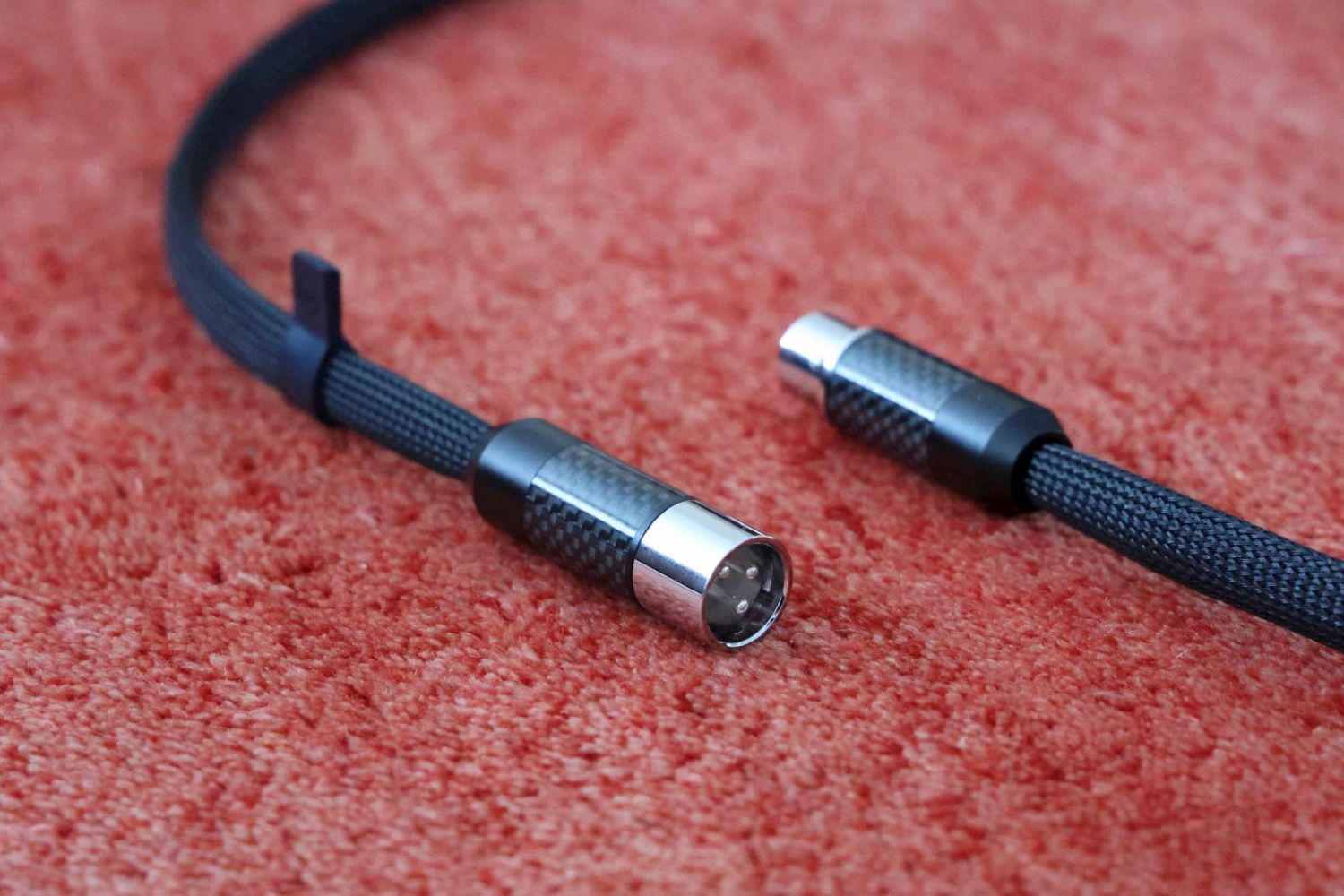
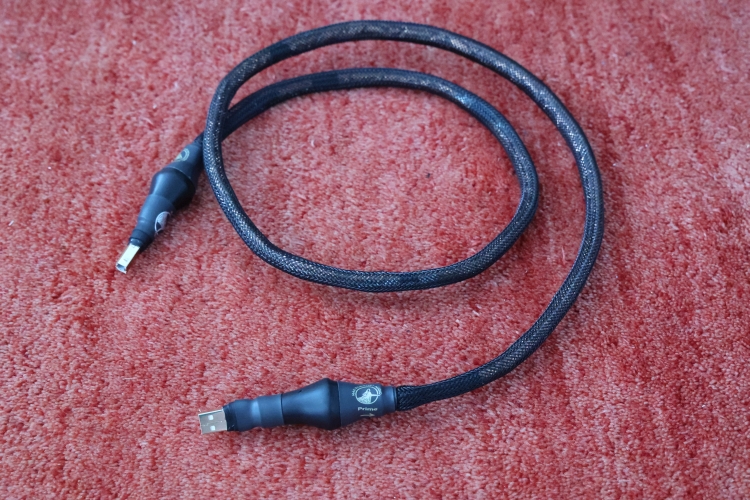
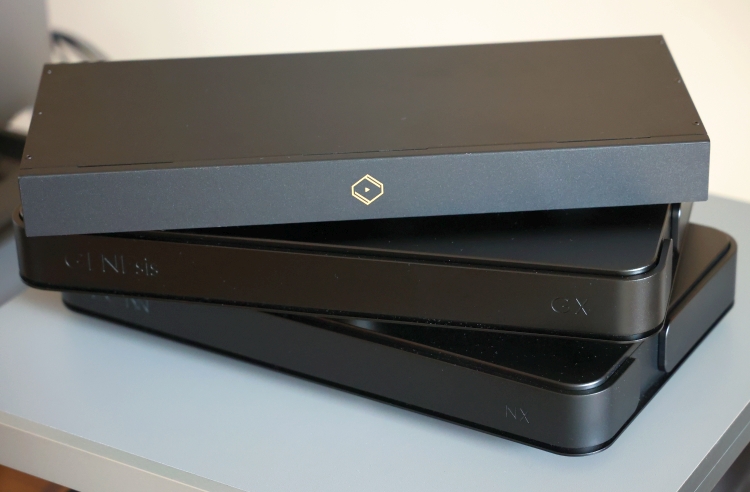


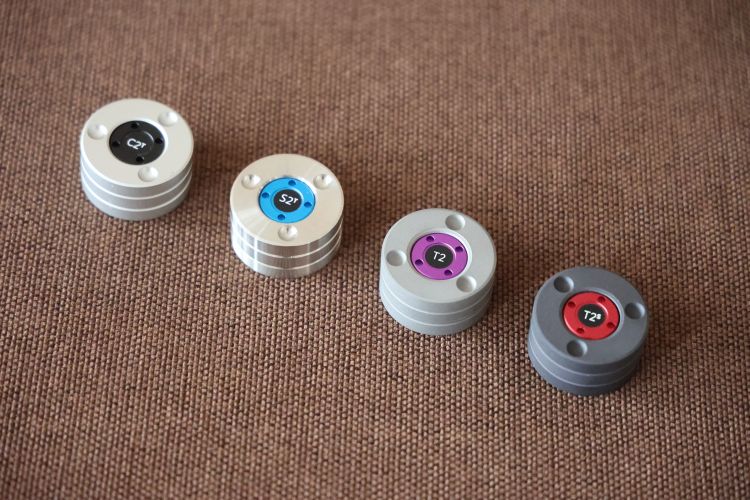
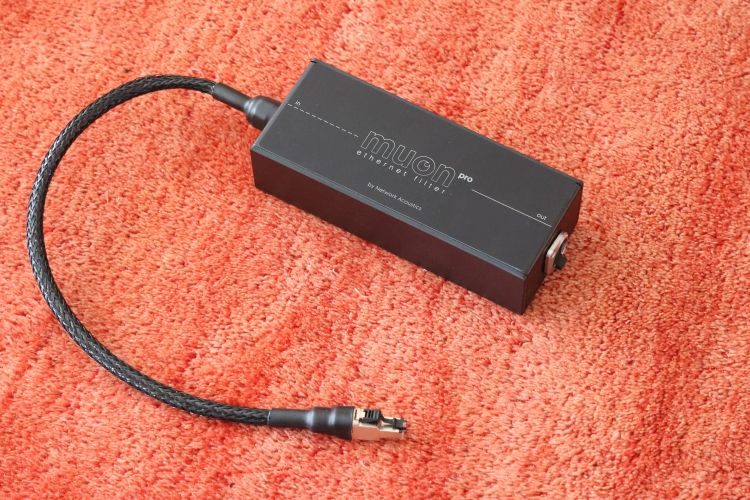
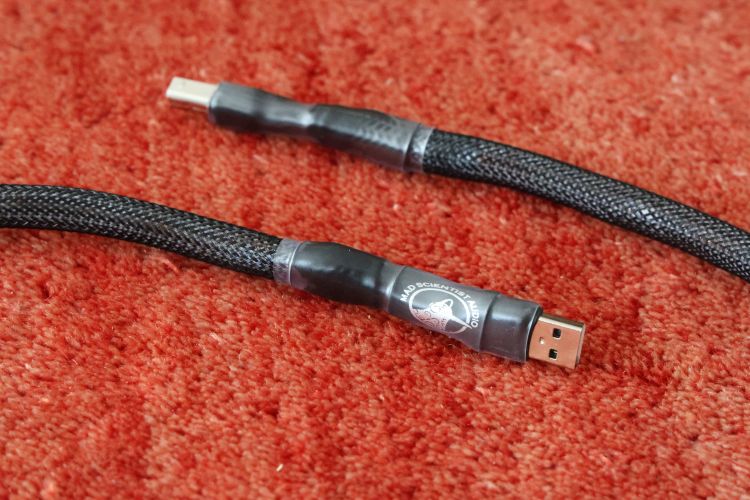
Thanks for the helpful review as always Christiaan. The qualities of the Tempus that you mentioned are all areas I’m hoping to improve on/alter in my system, so I’m considering ordering a Tempus and Muon Pro with two Network Acoustics cables. I am able to proceed with without hearing first due to a flexible return policy a dealer has offered me.
My system is very transparent but is a bit rich and bass heavy/organic/dark so I’m hoping the Network Acoustics gear might help lighten things up and add a bit of air and free things up on the timing front. The Tempus will be replacing an Innuos PhoenixNET. Any thoughts on how the two compare? Not sure if you’ve heard the PhoenixNET; I realize you haven’t explored Innuos products on your site to date.
Hi Nigel, it sounds like the tempus may indeed provide what you are looking for. Alas, I’ve never heard any Innuos components and couldn’t tell you how the PhoenixNET would compare.
Thanks again Christiaan. Some of those Ansuz footers you mentioned are really, really pricey. I’ve found some footers I’ve tried tend to emphasize midrange body and midbass in particular (along with providing soundstage and other benefits), which actually works against my goal of making my system less rich and to make my system a bit less grounded, more light footed and “sober” to use your word. Of the footers you’ve mentioned are there models that would help in that regard, as opposed to becoming richer with more bass which at present I’m wanting to avoid? I noticed that you mentioned the entry level Ansuz footers emphasized the mid and top end, but to me it sounds like the higher models may take me in the wrong direction regarding bass and tonal richness? Going to give Townshend Pods a shot given their generous return policy – not sure if you’ve had a chance to try these….
Hi Nigel, in short, C2T or, if budget allows it, T2, are the ones you will probably prefer. For an in-depth description of the Ansuz Darkz, please see my dedicated Darkz review. Or search the site for Darkz as I used them in a bunch of other reviews. Happy to answer any residual questions there. I’ve not heard any Townshend products yet.
Interesting review, thank you. I currently have a Melco S100 and considering a change. Any thoughts on how this switch compares to a Synergistic Research?
Hi Richard, Alas, I have no experience yet with the Synergistic Research Switch.
Thank you for your excellent review. I have a MU2, and was wondering if you found the NA Tempus and Muon Pro provide the improvement you write about? I see you use a MU1. These are supposed to have a very good upsampling and timing, which some say precludes the use of these network devices to a great extent. BTW: Read you article on Scintillas. I am one of the founders of Apogee and the designer of the Full Range and the Scintillas. Using Scintilla SN 001 for all this time.
Hi Gary, how nice to meet you! What amazing and game-changing work you did together with Leo Spiegel and Jason Bloom. Apogee remains close to my heart, as you might tell from the dedicated Apogee Acoustics Company Special section on HFA;-)
Both the MU1 and MU2 have very good upsampling and good timing indeed. However, I would not say timing is a main property for deciding if adding the tempus is desirable or not. I find that network switches always have an effect, no matter the server or streamer that is used. However, there is always the matter of system synergy and personal preference. The tempus enhances the fluidity, flow, and naturalness of the sound, and I found this works with all servers, Grimm included. If what I wrote in the tempus and Muon reviews appeals to you, then I would not hesitate to try it.
Hallo, ich habe ebenfalls einen Tempus + deren Ethernetkabel + 2x Muon Pro Filter. 1x Muon Pro vor dem Tempus, 1x nach dem Tempus. Meine klangliche Vorliebe im Zusammenspiel mit einem Antipodes K50 Server ist der 100 MB/s Ausgang vom Tempus. 100 MB/s klingt ruhiger, analoger, aufgelöster, nicht so stressig im Vergleich zum 1 GB/s Ausgang/Anschluss. Habe auch mit Network Acoustics darüber gesprochen, da sie den 1 GB/s bevorzugen. Aber für meine Ohren klingen 100 MB/s besser. Egal ob beim Streamen via Tidal, Qobuz oder von lokaler interner SSD.
Viele Grüße
Christian